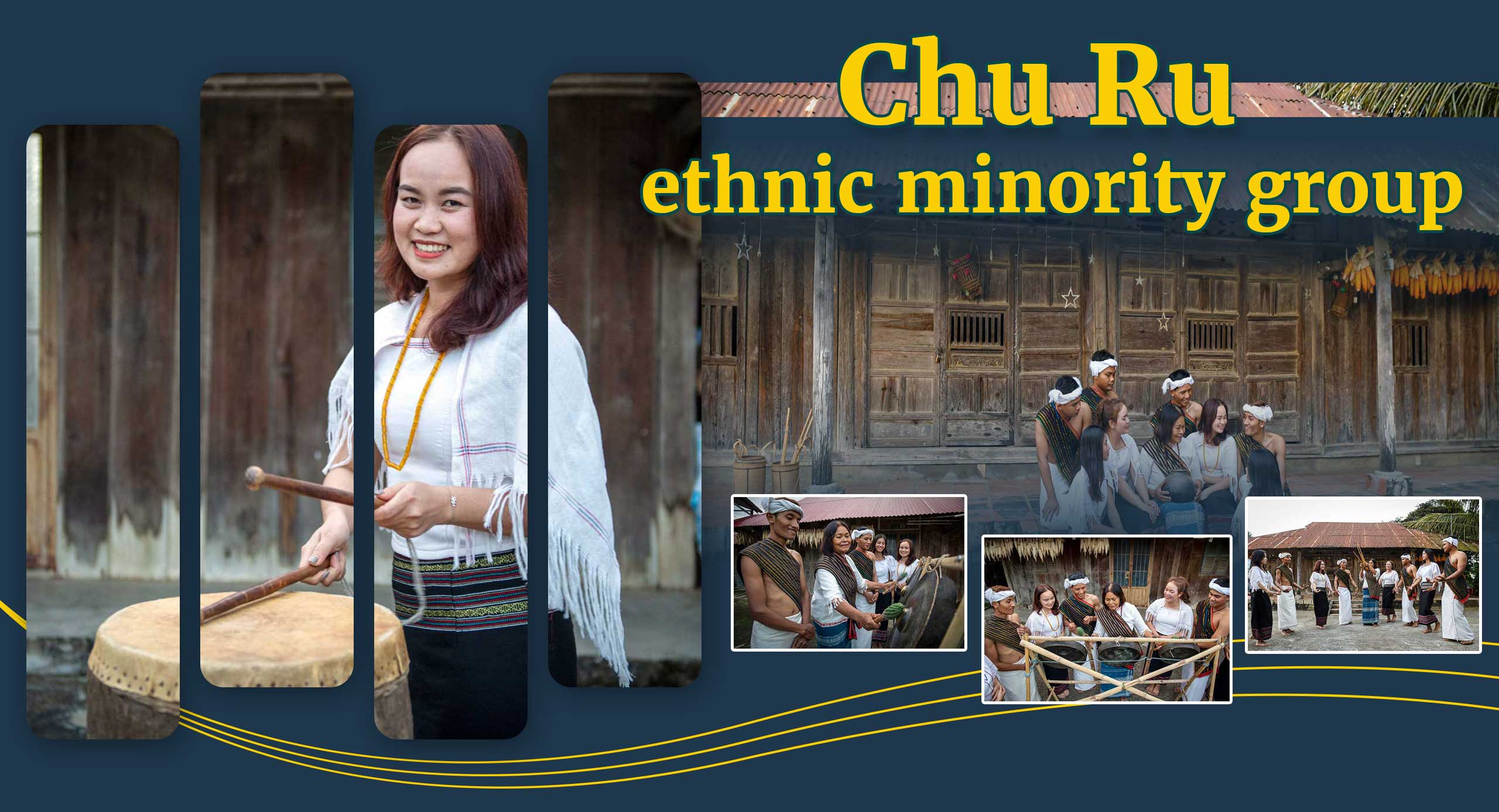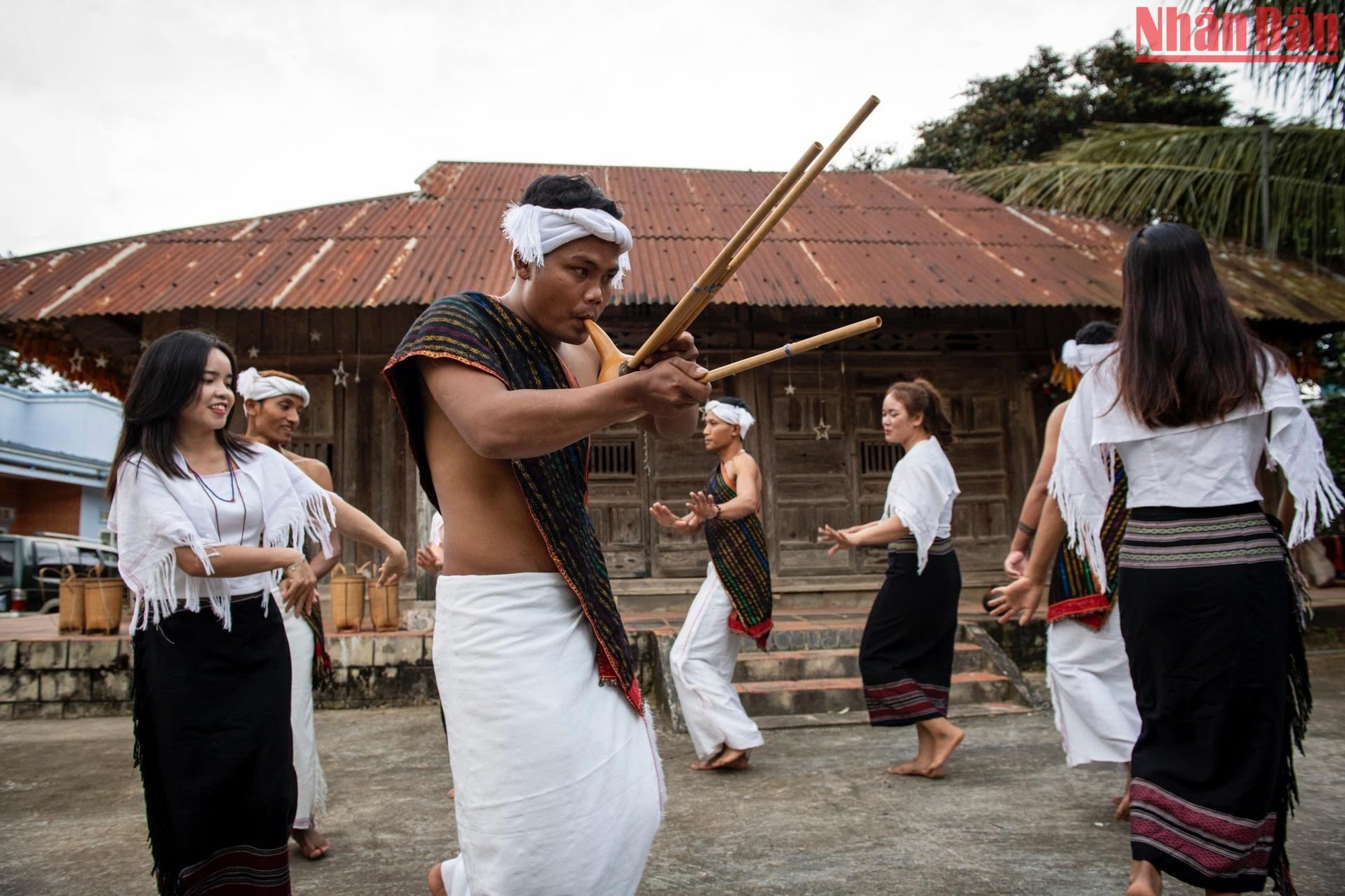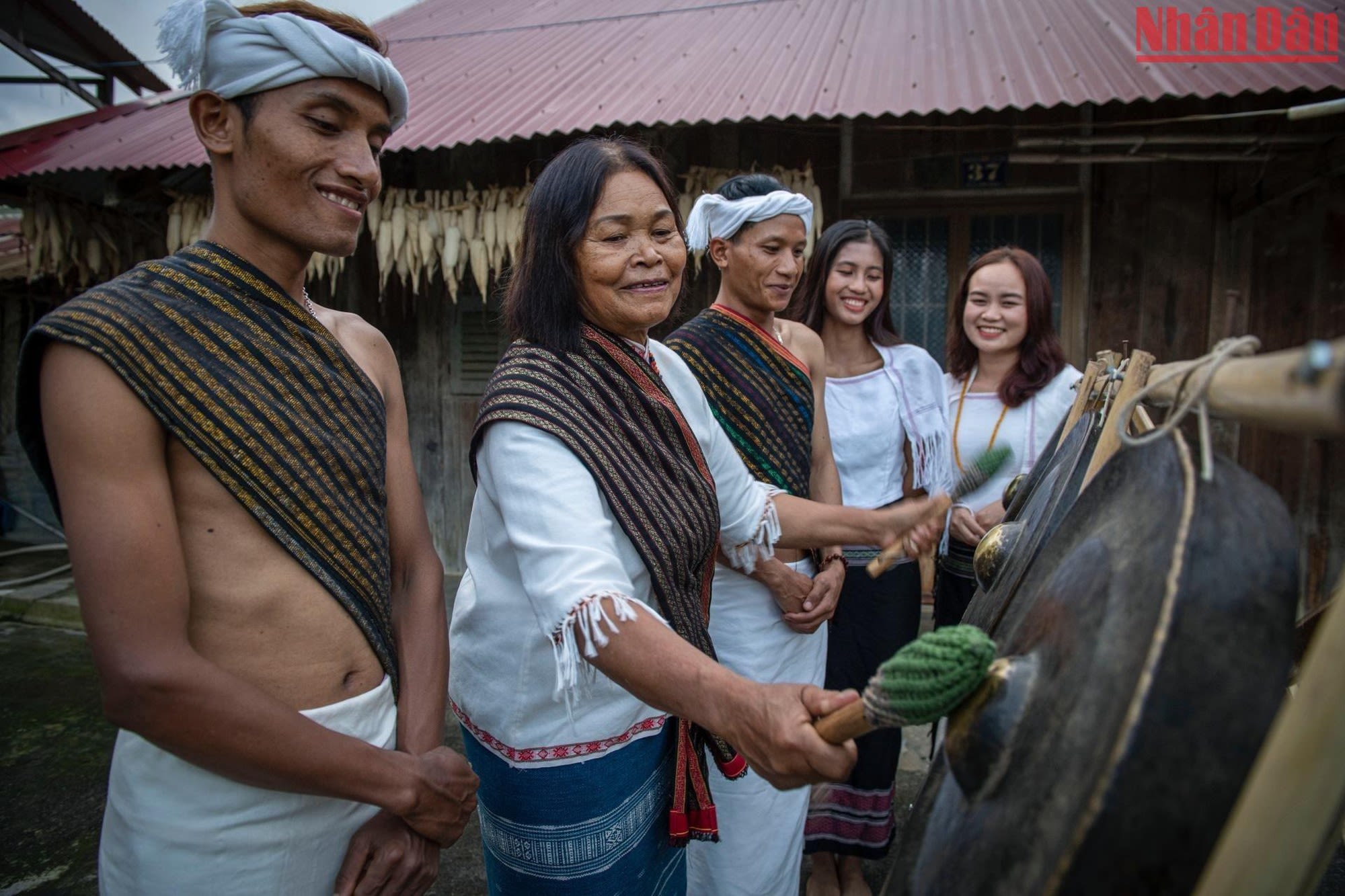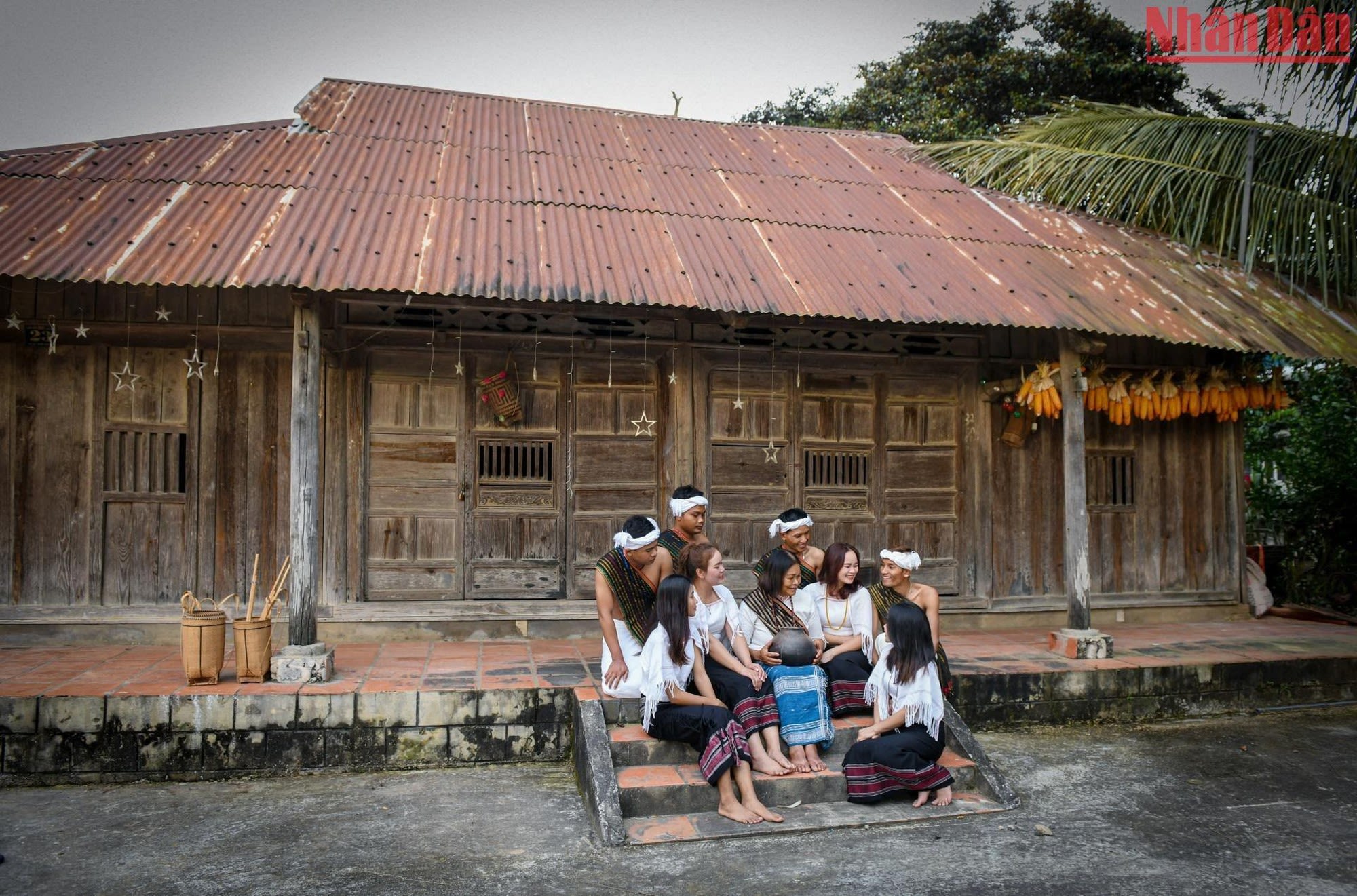
Other names: Cho Ru, Kru, Thuong
Language: The language belongs to the Malayo-Polynesian language group of the Austronesian family. There is a part of Chu Ru people who live close to the Co Ho people, so they speak Co Ho (belonging to the Mon-Khmer language group).
Residence: The residence of the Chu Ru people in Vietnam is in 23 provinces and cities. Of which, the main residences are Lam Dong province, Ninh Thuan province, and Ho Chi Minh City.
Perhaps in the past, the ancestors of the Chu Ru were part of the Cham community, later, they moved to the mountains to live separately from the original community, so they became the Chu Ru.
Historical Origin
Perhaps in the past, the ancestors of the Chu Ru were part of the Cham community, later, they moved to the mountains to live separately from the original community, so they became the Chu Ru people.
Other names: Cho Ru, Kru, Thuong.
Population and language
Population: According to the census on the 53 ethnic minorities as announced on April 1, 2019, the total population of the Chu Ru ethnic group is 23,242 people. Of whom, 11,363 are male and 11,879 people are female. 96.3% of the population lives in rural areas.
Language: The language belongs to the Malayo-Polynesian language group of the Austronesian family. There is a part of Chu Ru people who live close to the Co Ho people, so they speak Co Ho language (belonging to the Mon-Khmer language group).
Geographic distribution
The residence of Chu Ru people in Vietnam is 23 provinces and cities. In which, the main residences are Lam Dong province, Ninh Thuan province, and Ho Chi Minh City.

Traditional dance of the Chu Ru people. (Photo: Thanh Dat)
Traditional dance of the Chu Ru people. (Photo: Thanh Dat)
Main features
Food: The Chu Ru people's main food is rice. Side foods include corn, sweet potatoes, and cassava. Food includes bamboo shoots, legumes, stream fish, and hunted birds. Beverages with alcohol and distilled spirits. Both men and women like to smoke tobacco with a pipe.
Clothing: Weaving is not developed, so the products of clothing such as skirts, shirts, loincloths, blankets, slings are obtained by exchanging with neighboring ethnic groups such as: Cham, Co Ho, Ra glai, and Ma.
Residence: The main residence of Chu Ru people is Don and Loan communes of Don Duong district, some people is living in Duc Trong and Di Linh districts of Lam Dong province. In addition, in the two districts of An Son and Duc Linh in Ninh Thuan province, there are also several thousand Chu Ru people.
The Chu Ru live in stilt house made of bamboo, wood and waya Bamboo, with thatched roofs. They reside in village (known as 'plei'). Families of the same bloodline often build houses near each other.
Social relations: The dominant relationship in Chu Ru people's social structure is the matrilineal family with honoring the role of women. Women will also be the heirs of the family. Children are also born with their mother's last name.
In the self-governing apparatus in the villages, men will operate all areas of society according to the orientation of their ancestors, but that is also according to the will of the wife - the owner of the house they are living in.
There is a divide between the rich and the poor in society, but there is no conflict between the two classes in the village.
Marriage: The woman takes the initiative in the couple relationship. According to the ‘pulling husband’ custom (also known as ‘catching husband), a Chu Ru woman who has chosen her future husband informs her parents of her choice, asking them to invite a matchmaker to visit the boy’s family. The matchmaker and a maternal uncle or the oldest sister of the girl bring offerings to the boy’s to make a marriage proposal. If being accepted, the girl’s family visits the boy’s again on a chosen date for the engagement ceremony in which the matchmaker of the bridal family wears the engagement ring and bracelet for the groom. After the wedding, the bride stays with her husband’s family for two weeks before a ceremony to take the groom to the bride’s home is held.

(Photo: Thanh Dat)
(Photo: Thanh Dat)
Festivals: In one year, with the wet rice cultivation cycle, the Chu Ru people have various rituals dedicated to different gods such as Bo Mung (god of dam), Ro Bong (god of ditch), Khau Doong (god of rice) when sowing seeds, rice offering ritual, and post-harvest ritual. Notably, every second lunar month, villagers gather here for a ritual to worship Bo Mung, offering the god a goat.
In addition, the Chu Ru people conducts another ritual dedicated to Yang Wer, a secular tree in the village which is believed to shelter a powerful deity. Together with food and drinks, the Chu Ru people makes wooden dummies in the shape of animals for offering to Yang Wer.
Funerals: The Chu Ru people follow the custom of burying themselves in the communal cemetery of the village. In the past, funerals were often celebrated with the sacrifice of buffaloes and cows.
Culture and art: The Chu Ru own a treasure of proverbs, verses, particularly those telling the history and development of the group and praising matriarchy and the role of women in the society. For musical instruments, it is worth noting their drums, trumpets and gongs. There are also a number of other musical instruments such as r'tong, kwao, terlia, unique instruments of the Chu Ru people. During the festival, Chu Ru traditional music is often played along with the famous tamga dance.
Calendar: Chu Ru people follow the lunar calendar, calculate the month of the agricultural cycle of their ancestors.
Education: In the past, the Chu Ru people did not have a written language, and all communication and information were transmitted orally.
Folk games: Children's hobbies are spinning tops, playing kite flying (butterfly kite and flute kite). They also often play tug of war, walking on stilts, chasing.

(Photo: Thanh Dat)
(Photo: Thanh Dat)
Economic conditions
The Chu Ru live in sedentary settlements on the basis of a long-standing agricultural tradition. There are two types of fields, including mud and dry fields. Irrigation by ditches, dams, and dikes. The garden is in the field and the garden is near the house. Livestock and poultry farming. Hunting, gathering and fishing are regular activities. Popular home crafts include knitting, raw pottery.